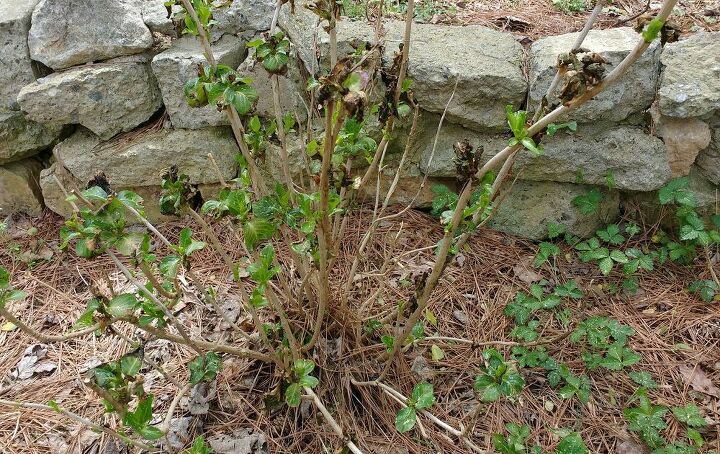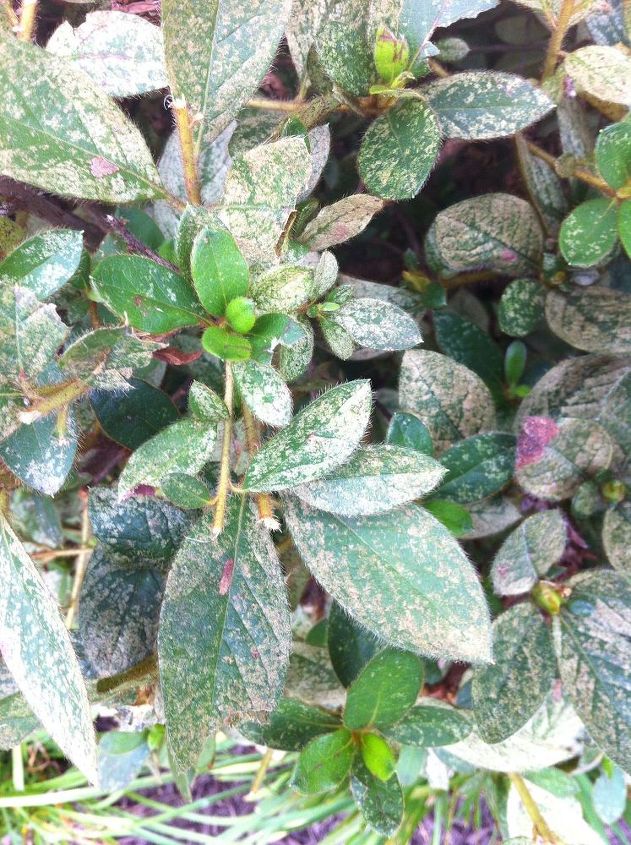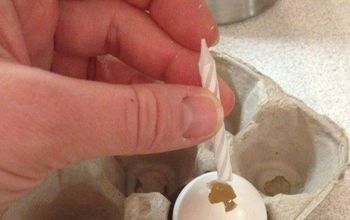What's wrong with this hydrangea?

but has these blackened leaves on it. One next to it is the same but 3 others very close-by are perfect. I guess I should pull off the black leaves or should I but the ends off that have these leaves on them? I'm in north metro Atlanta.
Related Discussions
GNATS - How to get rid of them?
Somehow my house and garden got tiny gnats that killed my fuchsia plant and fly everywhere. I have tried ALL the Web recommendations - soap and oil dishes, sand in th... See more
Marigolds growing! Should I pinch the buds?
My marigold plants are growing. I heard that pinching the buds until Autumn will allow them to grow without killing the plant. Is this true?
Growing garlic
Growing our first garlic, should we wait until the leaves are drying out before we pick it? Husband picked first one today along with our first potatoes.
How to keep mice out of your garden?
Hi everyone, I have mice in my garden destroying my vegetables and I have also noticed them in the barn and shed. Please can someone tell me how to prevent them from ... See more
What's the best flower/plant to grow in Texas?
I know that opinions vary, but what's your opinion?!I have great luck w Rosemary plants. Green all year long.
Can anyone help me to identify what is wrong with my Azaleas?
is there anything I can do to get rid of this problem? Thank you!





Too much of a good thing can sometimes lead to a bad result. Hydrangeas love water, but excessive irrigation or wet foliage injures plants. Insufficient water causes leaves to turn black or brown. Severe drought conditions cause entire plants to defoliate. Too much water at the root zone, combined with a poorly draining site, causes root rot that promotes black spots on leaves. Prolonged moisture on foliage creates a breeding ground for disease pathogens, which leave black leaves in their wake. Late spring frosts blacken tender hydrangea leaves. In other hydrangea cultivars, this may prevent all flowering for the current season. In reblooming cultivars, if a late spring frost kills the first round of flower buds, flowers forming on new wood will appear later in the season. Remove all black leaves and throw in garbage not on ground water plants only if really needed and only on soil not onto leaves/stems
Along with the above, use pruning tool or scissors to cut off. Do not put them on the ground, but put in a bag immediately. Do not touch other leaves with the darkened one or with your hands. It will transfer.
I believe it’s a systemic mold infection or fungus infection.
Will the infection return the next year?
And a side note.....unless you have Strawberry vines growing behind your bushes that vine could be Poison Ivy/Sumac?
Nothing to dread. Mine get luke this and when i think they have had it, I am proven wrong. I take the time to prune anything that is a dry stick without any bud even the tiniest. If a stem has some green to it even with the tiniest bud I trim above that bud. Take care of it as usual and before I knwo it my plant has gotten new life. And yes poison ivy underneath that but I am sure you took care of it by now.🙏🏻Best of luvk and God bless.
Pull some of the mulch away from the base of the plant as it could harbor mold spores.
I live an hour and a half south of you. All mine looked like that for a bit...we had a warm spell that got them going and then that cold snap we got that put the temps in the 20’s burned them. Anything that was growing and tender got cold burned. I wouldn’t worry about it as I don’t think it’s disease if yours were like mine. The hard frost got all of my drift roses blooms and some of the shrubs that also bloom got burned by the cold as well. My ferns that we’re producing fronds at the time of the frost also burned.
I would trim back drastically all of those stems that look dead and open up the inside of the plant so that the air can circulate. Trim back the green branches until the next node. Clean away all debris around the base of the plant to stop spores from spreading to the plant. If you want to mulch then put 3 inches of real cedar mulch around the plant but not up to the base of the plant, away about three inches from the main stems. Fertilize with a fertilizer made especially for hydrangeas. Keep trimming off anything that looks diseased and eventually your problem will disappear.
cut back to where there are two leaf buds (opposite each other) When your hydrangea regrows, and it probably just has wind or frost damage-you will get more flower heads. Good luck
I seem to agree with Wes... living in Canada, I've seen frozen leaves before too. I would wait a week or so, or wait until the weather changes (for good) and then take a look before doing anything too drastic. Patience is a virtue and these plants are tough as nails. Just the new growth is more fragile to extreme temperature changes. Try an observe if they have the same exposure like to the wind, sun, rainfall...and you may find the answer is right there. Best of luck! Mine are still under the snow.....grrrr or should I say brrrrr? ;-)